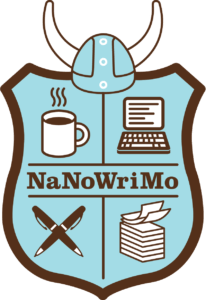Quick links, bringing you great articles on writing from all over the web.
~ * ~
Tips for Creating Voice in Your Writing
There is a lot of writing advice out there, some good, some not so good, and I’ll try not to repeat it. I’m only going to talk about what works for me, and I hope it can provide some guidance and help for you as you develop yours. So with that caveat in mind, let’s talk about Voice.
This guest post is by Beth Lewis. Lewis was raised in the wilds of Cornwall and split her childhood between books and the beach. She has traveled extensively throughout the world and has had close encounters with black bears, killer whales, and great white sharks. She has been, at turns, a bank cashier, a fire performer, and a juggler, and she is currently a managing editor at Titan Books in London. The Wolf Road is her first novel. Visit her at bethlewis.co.uk or on Twitter @bethklewis.
There are a couple of definitions it’s useful to keep in mind as we go. There is Author Voice and Character Voice. I can’t tell you much about Author Voice. That’s all you and everyone is different. No two Author Voices are the same. It’s how you speak and think and then how you translate that to the page. All I can really say is trust yourself. Be yourself. Don’t try to write like someone else, it’ll sound fake.
Character Voice on the other hand, that I will talk about. A strong voice is what will make your character feel authentic to readers. Several friends who have read The Wolf Road have given me the same comment – I forgot you, my friend, wrote it. They don’t hear me or my voice in the book at all. Even my mother said the same. This is a good thing. It means the character voice was strong enough to overtake mine.
Here are a few things to consider if you’re looking to write a story with a strong voice.
First person vs Third person
~ * ~
If you liked this article, please share. If you have suggestions for further articles, articles you would like to submit, or just general comments, please contact me at paula@publetariat.com or leave a message below.

 Ask any agent or editor what they look for in a manuscript and inevitably they’ll say they’re looking for voice. A strong voice. A unique voice. An original voice. A realistic voice. But how do you ensure you and your main character possess this? That’s the billion-dollar question, isn’t it?
Ask any agent or editor what they look for in a manuscript and inevitably they’ll say they’re looking for voice. A strong voice. A unique voice. An original voice. A realistic voice. But how do you ensure you and your main character possess this? That’s the billion-dollar question, isn’t it?


 Plot is how writers illustrate a story to their readers—which is why it’s so vital to craft a compelling one. It’s the foundation on which a story is built, and the weaker that is, the less likely the story will stand, let alone entertain. That’s a lot of pressure to put on a poor story idea, so it’s no wonder so many writers have trouble with plotting.
Plot is how writers illustrate a story to their readers—which is why it’s so vital to craft a compelling one. It’s the foundation on which a story is built, and the weaker that is, the less likely the story will stand, let alone entertain. That’s a lot of pressure to put on a poor story idea, so it’s no wonder so many writers have trouble with plotting.
 Posted on
Posted on  July 10, 2016
July 10, 2016

 July 7, 2016
July 7, 2016 In this Indie Publishing Paths series, we first focused on how to decide which path will work best for us. Once we know
In this Indie Publishing Paths series, we first focused on how to decide which path will work best for us. Once we know  Picking the right font for your Kindle or Nook can enhance your reading experience. Some fonts are easy on the eyes, some have a ton of personality, and some tell stories of their own. Here are some fonts the experts suggest for your devices.
Picking the right font for your Kindle or Nook can enhance your reading experience. Some fonts are easy on the eyes, some have a ton of personality, and some tell stories of their own. Here are some fonts the experts suggest for your devices. JULY 6, 2016 by ROBERT WOOD
JULY 6, 2016 by ROBERT WOOD